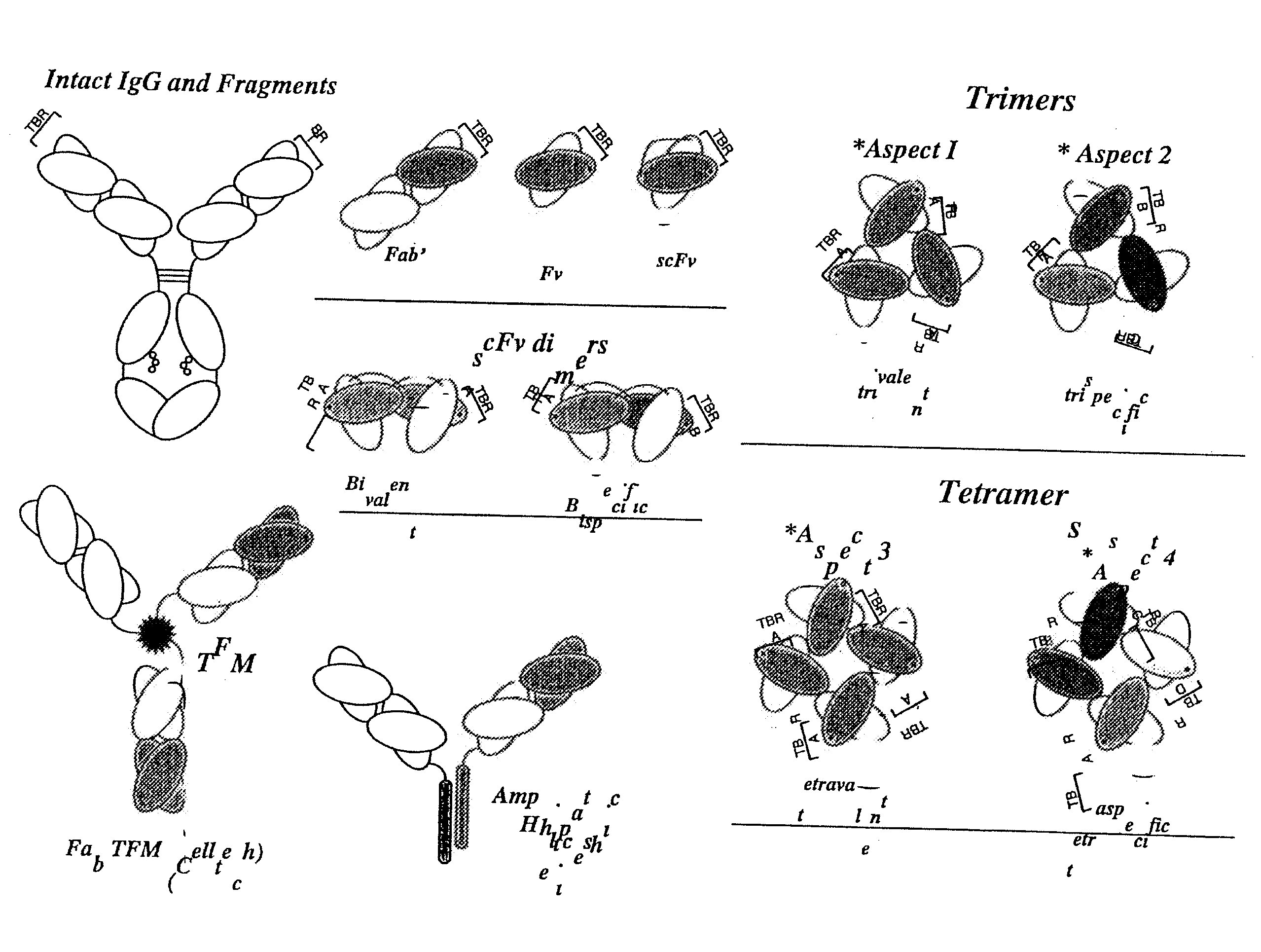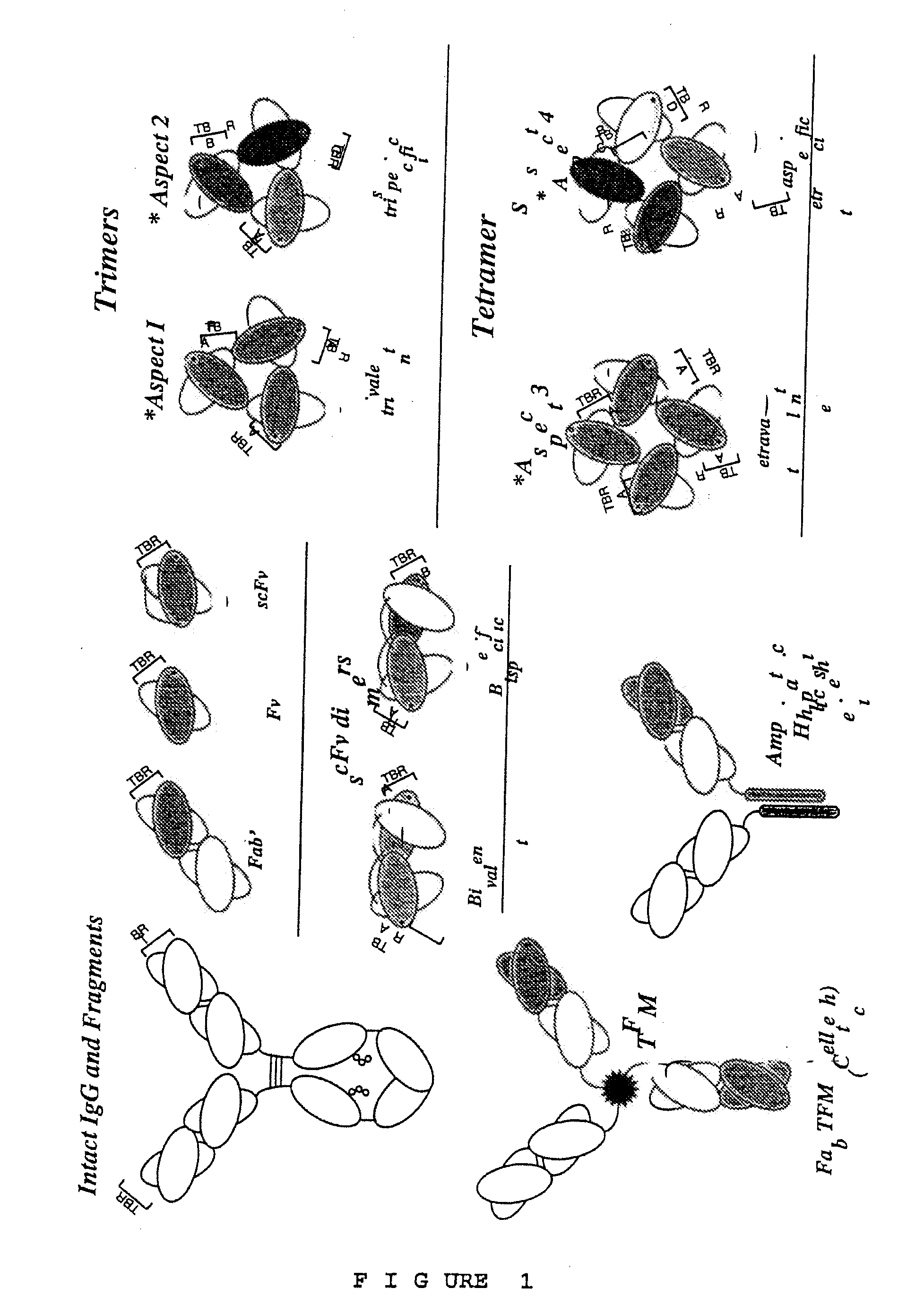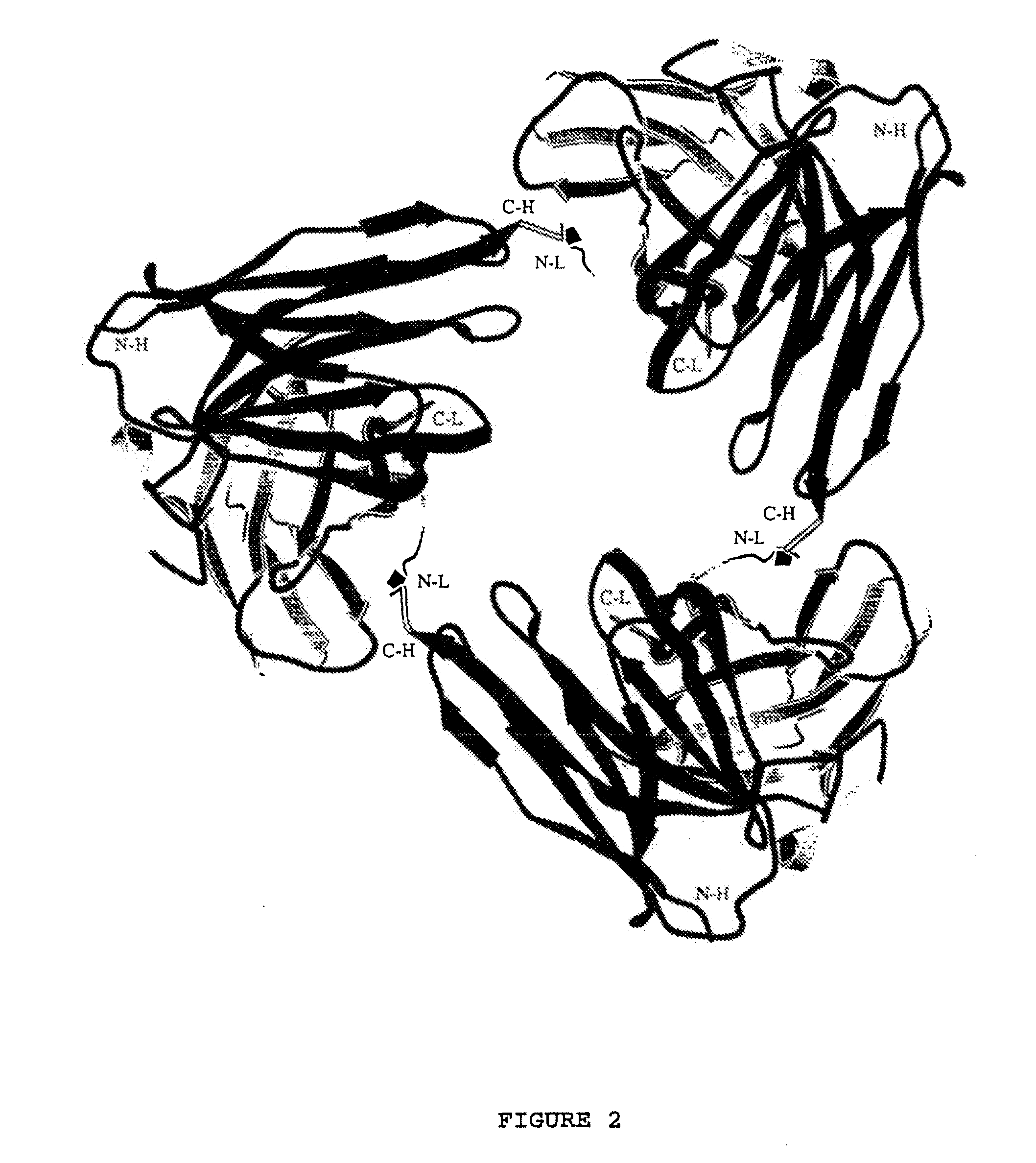High avidity polyvalent and polyspecific reagents
a polyvalent and avidity technology, applied in radiation therapy, pharmaceutical non-active ingredients, therapy, etc., can solve the problems of high cost, limited scope, and inability to produce monoclonal antibodies, and achieve the effects of improving stability, biological activity or pharmacokinetic properties, and modulating binding properties
- Summary
- Abstract
- Description
- Claims
- Application Information
AI Technical Summary
Benefits of technology
Problems solved by technology
Method used
Image
Examples
example 1
Construction of NC10 scFv (VH-VL) with 0, 5 and 10 Residue Linkers
[0108]The NC10 scFv antibody gene construct with a 15 residue linker (Malby et al, 1993) was used for the shorter linker constructions. The NC10 scFv-15 gene was digested successively with BstEII (New England Labs) and SacI (Pharmacia) and the polypeptide linker sequence released. The remaining plasmid which contained NC10 scFv DNA fragments was purified on an agarose gel and the DNA concentrated by precipitation with ethanol. Synthetic oligonucleotides (Table 1) were phosphorylated at the 5′ termini by incubation at 37° C. for 30 min with 0.5 units of T4 polynucleotide kinase (Pharmacia) and 1 mM ATP in One-Phor-All buffer (Pharmacia). Pairs of complementary phosphorylated oligonucleotide primers (Table 1) were premixed in equimolar ratios to form DNA duplexes which encoded single chain linkers of altered lengths.
TABLE 1DNA Sequences of Synthetic Oligonucleotide Duplexes Encoding Peptide Linkersof Different Lengths I...
example 2
Expression and Purification of the NC10 scFvs
[0111]The pPOW NC10 scFv constructs, with 0, 5 and 10 residues linkers as described in Example 1, were expressed as described by Malby et al, (1993) for the parent scFv-15. The protein was located in the periplasm as insoluble protein aggregates associated with the bacterial membrane fraction, as found for the NC10 scFv-15 (Kortt et al, 1994). Expressed NC10 scFvs with the shorter linkers were solubilised in 6M guanidine hydrochloride / 0.1 M Tris / HCl, pH 8.0, dialysed against PBS, pH 7.4 and the insoluble material was removed by centrifugation. The soluble fraction was concentrated approximately 10-fold by ultrafiltration (Amicon stirred cell, YM10 membrane) as described previously (Kortt et al, 1994) and the concentrate was applied to a Sephadex G-100 column (60×2.5 cm) equilibrated with PBS, pH 7.4; fractions which contained protein were analysed by SDS-PAGE and the scFv was located by Western blot analysis using anti-FLAG™ M2 antibody (...
example 3
Molecular Mass of NC10 scFvs
[0116]Gel filtration on a calibrated Superdex 75 column of affinity purified scFvs showed that the NC10 scFv-10 (FIG. 7) and scFv-5 eluted with an apparent molecular mass of 52 kDa (Table 2), indicating that both these molecules are non-covalent dimers of the expressed 27 kDa NC10 scFv molecules. Although NC10 scFv-5 and NC10 scFv-10 yielded predominantly dimer, very small amounts of higher molecular mass components were observed, as shown in FIG. 7 Panel b.
[0117]Gel filtration of affinity-purified NC10 scFv-0 yielded a single major symmetrical peak with an apparent molecular mass of approximately 70 kDa (FIG. 7, Table 2). Since gel filtration behaviour depends on the size and shape of the molecule, the molecular mass of scFv-10, scFv-5, and scFv-0 was determined by sedimentation equilibrium as described above in order to obtain more accurate values.
[0118]A partial specific volume of 0.71 ml / g was calculated for scFv-5 and scFv-0 from their amino acid com...
PUM
| Property | Measurement | Unit |
|---|---|---|
| flow rate | aaaaa | aaaaa |
| pH | aaaaa | aaaaa |
| molecular mass | aaaaa | aaaaa |
Abstract
Description
Claims
Application Information
 Login to View More
Login to View More - R&D
- Intellectual Property
- Life Sciences
- Materials
- Tech Scout
- Unparalleled Data Quality
- Higher Quality Content
- 60% Fewer Hallucinations
Browse by: Latest US Patents, China's latest patents, Technical Efficacy Thesaurus, Application Domain, Technology Topic, Popular Technical Reports.
© 2025 PatSnap. All rights reserved.Legal|Privacy policy|Modern Slavery Act Transparency Statement|Sitemap|About US| Contact US: help@patsnap.com



